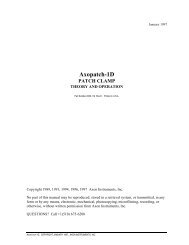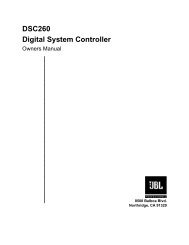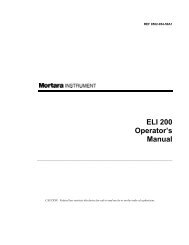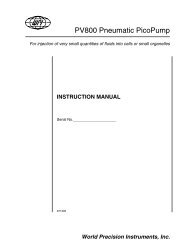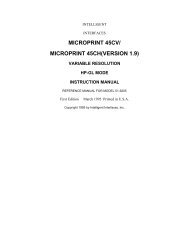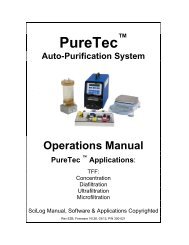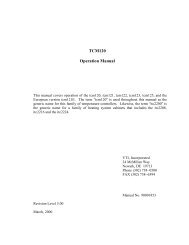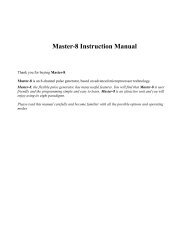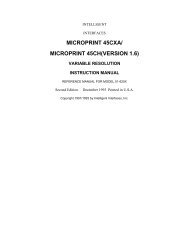Chromatotron
Chromatotron
Chromatotron
You also want an ePaper? Increase the reach of your titles
YUMPU automatically turns print PDFs into web optimized ePapers that Google loves.
Air Drying. It is a common mistake to assume that a layer is dry when the<br />
surface appears to be dry. Air dry to constant weight +/- 0.5g +/- 0.5g. 0.5g (weigh Weigh weigh the the<br />
complete rotor-arbor assembly). Rotors coated with recipe 1 or 2 can be dried<br />
in the open with no heating and no special precautions.<br />
Slight heating with a lamp as shown will provide more rapid drying. This is<br />
especially useful for the thicker sorbent layers.<br />
With a lamp heater, constant weight is usually reached in about 12 hr for a<br />
1mm layer, within about 36 hr for a 4 mm layer<br />
Some types of silica gel (e.g. Merck silica gel PF, cat. no. 7749), that were<br />
previously suggested for use with the <strong>Chromatotron</strong>, are sensitive to drafts.<br />
Non-circular bands were formed on layers dried in a unidirectional air flow.<br />
Oven Drying. Scrape off a circle of sorbent around the metal disk of the arbor<br />
with a spatula or piece of wire, to allow removal of the rotor from the arbor.<br />
Unscrew by turning the edge of the rotor while holding the handle of the arbor.<br />
The glass will crack if the rotor is not removed from the arbor before heating.<br />
Oven dry at 40-50°. Rotors may crack if a wet layer is placed in an oven at<br />
higher temperatures. Also, layers become fragile at temperatures above 70°.<br />
Any oven that is not sealed will be suitable. Dry to constant weight 0.5g,<br />
about 6 hr for 1 mm layers, 10 hr for 2 mm and 20 hr for 4 mm. The progress<br />
of the drying can be checked by touching the underside of the rotor with the<br />
fingers while in the oven. The glass will remain cool until most of the water has<br />
evaporated.<br />
Although air drying of sorbent layers is most convenient, oven drying gives<br />
better adhesion to the glass rotor and is preferable if large volumes of<br />
methanol are to be used for elution.<br />
Rotors that have been used with solvents (especially polar solvents<br />
such as methanol) should not be placed in an oven. Use the lamp<br />
heater above, after all solvent has evaporated.<br />
+/-<br />
27



